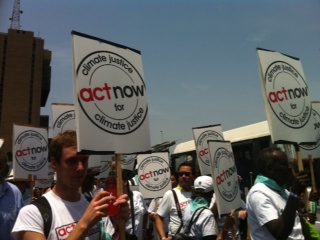
“It always seems impossible until it’s done.”
-Nelson Mandela
It’s midway through the final week at the 20th conference of the parties to the UN Framework Convention on Climate Change (UNFCCC) in Lima, Peru. With a limited amount of time left, it seems impossible that parties will agree on a framework for a new global climate change agreement which will need to be finalized next year in Paris. Countries are very far apart on some key points: will the agreement be a legally binding treaty or something less stringent? What issues will the new agreement cover? Will adaptation to climate change and the related issue of “loss and damage” (impacts that can’t be adapted to) be accorded as much attention as the all-important issue of emissions reductions? Will there be sufficient funding to help the least developed nations adapt and adopt low carbon technologies needed to sustainably develop their economies and reduce poverty?
One of the most contentious issues is whether the “firewall” between developed and developing countries will continue to allow countries like China, Brazil and India to shoulder fewer emission responsibilities. The firewall has stood since the beginning of the UNFCCC convention in 1992, and places much of the emission reduction responsibility on historically large emitters such as the U.S. and European Union. In the original UNFCCC document, large historic emitters of carbon dioxide and other greenhouse gases were listed as “Annex I” nations in the convention, and were designated to take on greater responsibilities for reducing emissions. Under the Kyoto protocol, for example, Annex I countries agreed to mandatory emissions reductions as part of their ratification of the treaty, while non-Annex I countries were only asked to make pledges for voluntary reductions.
In the years since the UNFCCC first took effect, China, a non-Annex I country, has surpassed the United States as the world’s largest emitter of greenhouse gases (although the U.S. still emits the most per capita). India is now the third largest emitter. Although both of these countries still have significant levels of poverty, it is hard to see how they can take on less responsibility for reducing emissions if we hope to stabilize global temperatures and stay within the 2 degrees Celsius limit required to avoid the worst impacts of climate change.
Currently, in the draft document that the UNFCCC Co-Chairs have proposed to govern negotiations over the next year, there are two versions of the introduction. One version calls for emissions reductions to be guided by the “provisions and principles” of the UNFCCC (including Annex I), and the other refers to “evolving responsibilities and capabilities.” This issue may not be resolved by the end of this week, but if we hope to see a global agreement to tackle climate change by the end of next year in Paris, the impossible will need to become possible.
